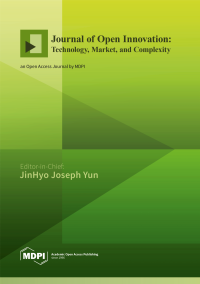Financial Open Innovations for Sustainable Economic Growth
A special issue of Journal of Open Innovation: Technology, Market, and Complexity (ISSN 2199-8531).
Deadline for manuscript submissions: closed (15 June 2021) | Viewed by 87444
Special Issue Editors
Interests: machine learning; sustainability; metal composites; financial markets; energy; innovation
Interests: energy strategy; energy policy; sustainable development; environmental science; strategic management; renewable energy deployment; energy technologies; socioeconomic studies
Special Issue Information
Dear Colleagues,
This Special Issue will publish some selected papers from the annual conference of IETSO 2020 (https://repa.jp/ietso-poland/). The development of financial technologies is responsible for significant tensions on the demand on financial assets and sustainable economic growth. Some financial assets can become strategic and critical resources. The development of financial technologies is determined by the success achieved in studying the formation processes and properties of the economic system.
This Special Issue aims to gather recent advances in the field of sustainable development and financial innovation. These challenges are related to fintech, but environmental, societal, economic, and financial tools as well as process management are also of interest.
This Special Issue is on the emerging technologies and applications in the field of financial innovation, including but not limited to:
- Smart payment and open innovation;
- Blockchain and open innovation;
- Cryptocurrencies and open innovation;
- Cashless payments and open innovation;
- Venture investments and open innovation;
- Roboadvising and open innovation;
- Cloud investment computing and open innovation;
- Virtual reality and open innovation;
- Artificial intelligence;
- Machine learning;
- Big data and analytics.
Dr. Alexey Mikhaylov
Dr. Mir Sayed Shah Danish
Guest Editors
Manuscript Submission Information
Manuscripts should be submitted online at www.mdpi.com by registering and logging in to this website. Once you are registered, click here to go to the submission form. Manuscripts can be submitted until the deadline. All submissions that pass pre-check are peer-reviewed. Accepted papers will be published continuously in the journal (as soon as accepted) and will be listed together on the special issue website. Research articles, review articles as well as short communications are invited. For planned papers, a title and short abstract (about 100 words) can be sent to the Editorial Office for announcement on this website.
Submitted manuscripts should not have been published previously, nor be under consideration for publication elsewhere (except conference proceedings papers). All manuscripts are thoroughly refereed through a single-blind peer-review process. A guide for authors and other relevant information for submission of manuscripts is available on the Instructions for Authors page. Journal of Open Innovation: Technology, Market, and Complexity is an international peer-reviewed open access quarterly journal published by MDPI.
Please visit the Instructions for Authors page before submitting a manuscript. The Article Processing Charge (APC) for publication in this open access journal is 800 CHF (Swiss Francs). Submitted papers should be well formatted and use good English. Authors may use MDPI's English editing service prior to publication or during author revisions.
Keywords
- cryptocurrencies
- blockchain
- machine learning
- sustainability
- financial markets
- energy
- innovation
- sustainable development goals
Benefits of Publishing in a Special Issue
- Ease of navigation: Grouping papers by topic helps scholars navigate broad scope journals more efficiently.
- Greater discoverability: Special Issues support the reach and impact of scientific research. Articles in Special Issues are more discoverable and cited more frequently.
- Expansion of research network: Special Issues facilitate connections among authors, fostering scientific collaborations.
- External promotion: Articles in Special Issues are often promoted through the journal's social media, increasing their visibility.
- Reprint: MDPI Books provides the opportunity to republish successful Special Issues in book format, both online and in print.
Further information on MDPI's Special Issue policies can be found here.





